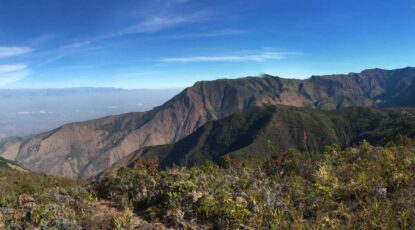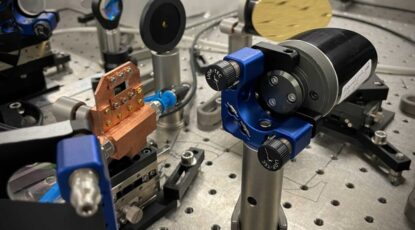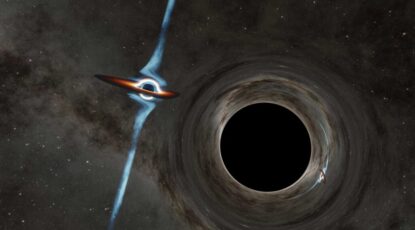Science and Technology
-
New long-necked dinosaur helps rewrite evolutionary history of sauropods in South America
A single trunk vertebra has allowed scientists to identify a new species of long-necked, plant-eating dinosaur. The creature inhabited the tropical lowland forested area of the Serranía del Perijá in northern Colombia approximately 175 million years ago.
-
Tusk reveals clues about extinct species
Some 13,000 years ago, a roving male mastodon died in a bloody mating-season battle in what today is northeast Indiana, according to the first study to document the annual migration of an individual animal from an extinct species.
-
Emulating impossible ‘unipolar’ laser pulses paves the way for processing quantum information
A laser pulse that sidesteps the inherent symmetry of light waves could manipulate quantum information, potentially bringing us closer to room temperature quantum computing. The study could also accelerate conventional computing
-
Check out the black hole at the heart of our galaxy
You are viewing the first image of Sagittarius A, the supermassive black hole at the center of our Milky Way galaxy. U-M scientist Mark Reynolds was part of the group to reveal the first direct visual evidence of its presence.
-
Dude, what if everything is just … a hologram?
U-M physicist Enrico Rinaldi uses quantum computing and machine learning to understand a heady concept called holographic duality. His work could one day answer the question: What’s inside a black hole?
-
Colossal black holes locked in dance at heart of galaxy
Caught in an epic cosmic waltz, two supermassive black holes appear to be orbiting around each other every two years. Researchers have discovered the pair of supermassive black holes caught in the act of merging 13 billion light-years away.
-
1,000-cycle lithium-sulfur battery could quintuple electric vehicle ranges
A new biologically inspired battery membrane has enabled a battery with five times the capacity of the industry-standard lithium ion design to run for the thousand-plus cycles needed to power an electric car.
-
U-M forms collaboration to advance quantum science and technology
U-M has formed a collaboration with Michigan State University and Purdue University to study quantum science and technology, drawing together expertise and resources to advance the field.
-
Spray-on coating could make solar panels snow-resistant
Researchers have demonstrated an inexpensive, clear coating that reduced snow and ice accumulation on solar panels, enabling them to generate up to 85% more energy.










